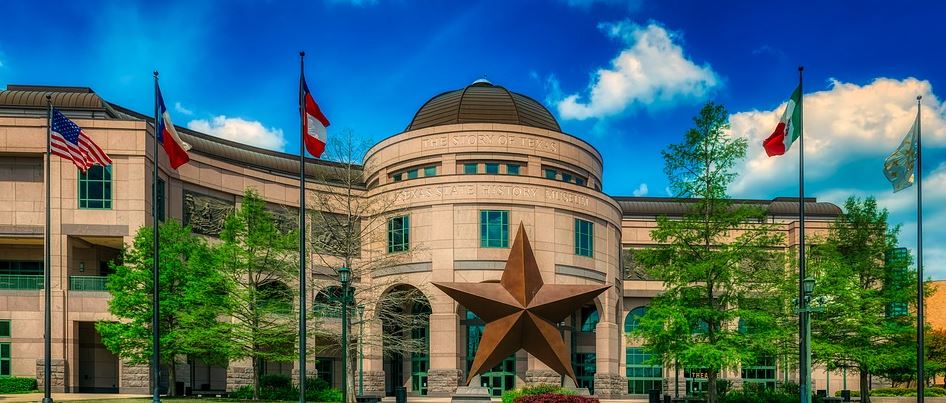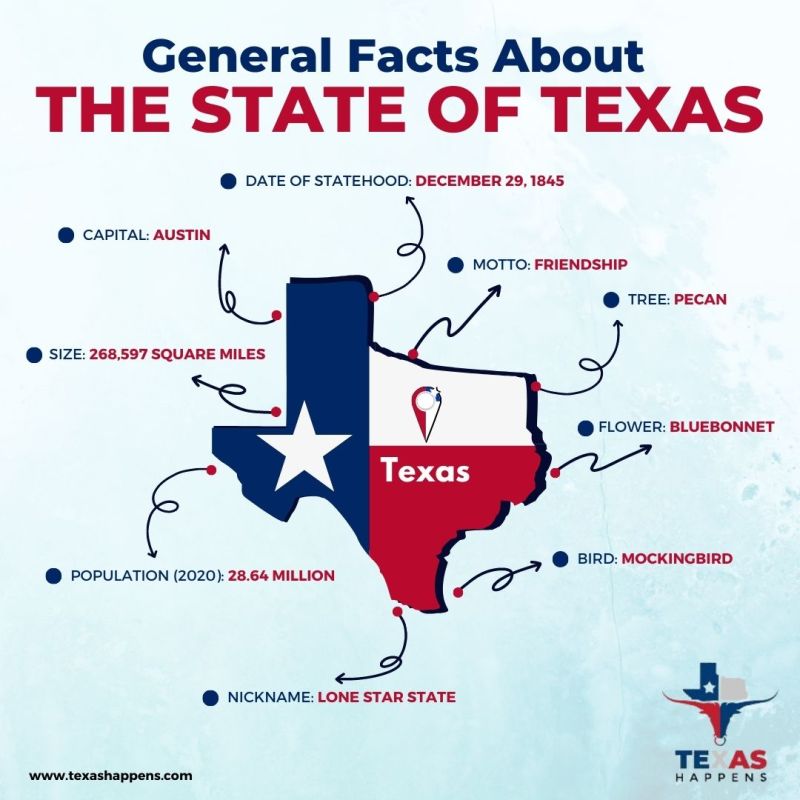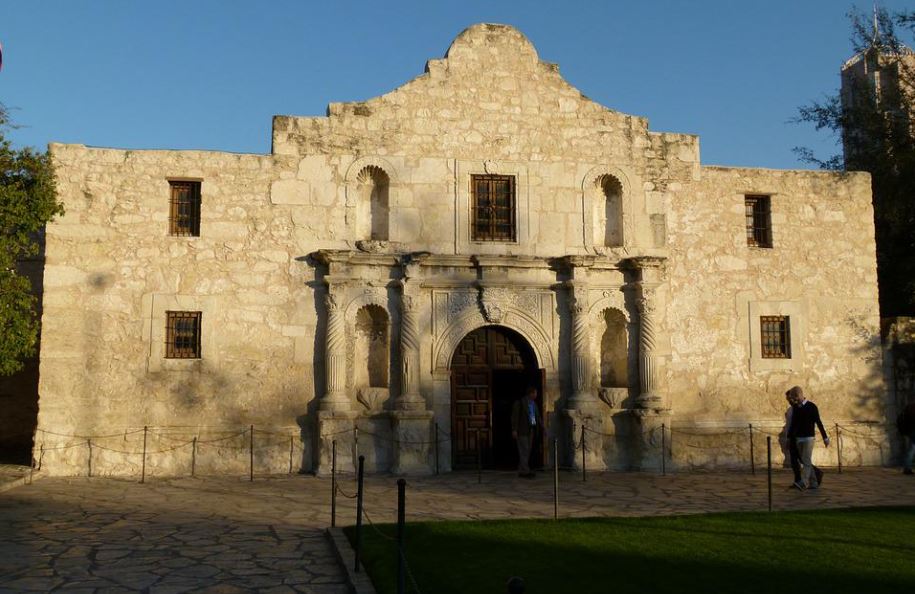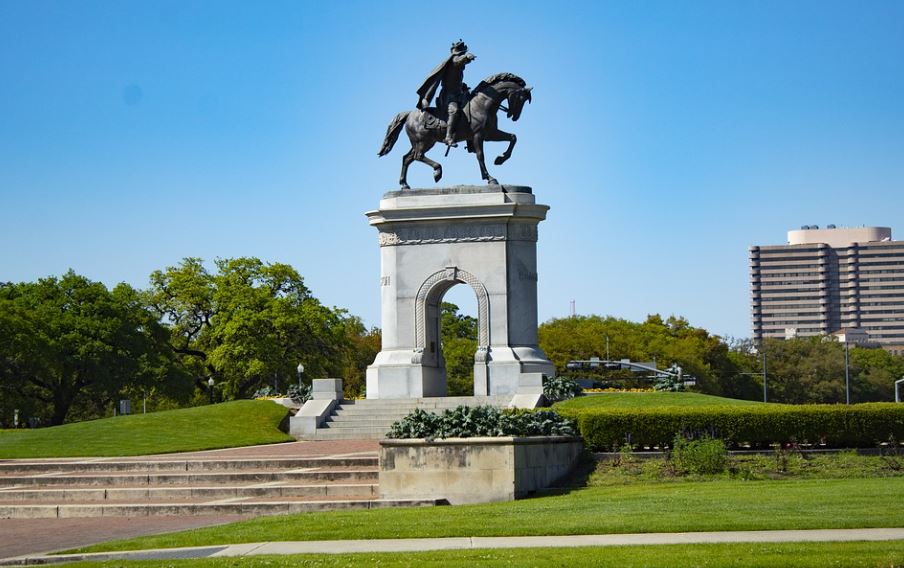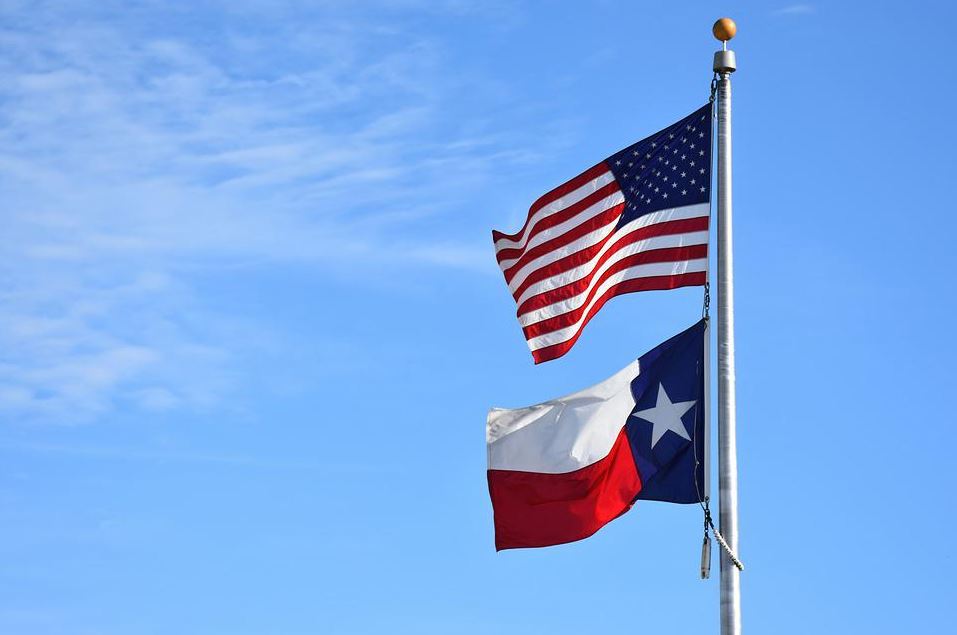Texas is an integral state of the United States of America. It is popularly known as the Lone Star State. If you are familiar with the old refrain that “everything is bigger in Texas,” well, that statement is not altogether wrong, as Texas is the second-largest state in the Union next to Alaska. In fact, it is larger compared to any mainland European country. It also has the second-largest population in the U.S., falling just behind California.
There are many great things to see and discover in Texas. But have you ever wondered about its history? How do you think did people discover Texas, and how did it become one of the states in the U.S.? If you are curious, we’re here to help you. In this post, we are giving you an infographic on the history of Texas.
The Early History of Texas
Conceivably around 37,000 years ago, the ancestors of the West Texas Native Americans lived in camps. They only owned crude spears and flint-pointed darts and survived primarily on wild game. On the other hand, in the more abundant areas of East Texas, Native American tribes created permanent villages and well-managed farms. They also developed political and religious systems.
Creating a loose federation to be able to preserve peace and deliver mutual protection, they came to be known as the Caddo confederacies. When the first Europeans entered Texas in 1528, it was sparsely settled. However, the culture and habitation of the Native Americans exerted measurable influence on the later history of the region.
Settlement in Texas
The Spanish had sent more than 30 expeditions into Texas by the 1730s. By 1718, San Antonio housed a military post and a mission (the Alamo) and had become the administrative center. Missions were recognized in Nacogdoches in East Texas, near El Paso in the far west, and in Goliad in the south. Aside from the Spanish, the French also explored Texas. The center of French claims to East Texas were the explorations of Rene-Robert Cavelier, Sieur de La Salle, along with his colony at Matagorda Bay.
When the U.S. acquired the Louisiana Territory in 1803 from France and claimed land titles as far west as the Rio Grande, American colonization gained impetus. By 1819, the United States had accepted the Sabine River as the western boundary of the Louisiana Territory.
The Spanish government permitted Moses Austin to settle 300 families on a grant of 200,000 acres in Texas. In 1821, when Mexico gained independence from Spain, Austin’s son, Stephen Austin, received Mexican approval for the grant. He led his first group of settlers to the area along the lower Brazos and Colorado rivers.
By 1832, several colonies of Austin had about 8,000 residents. Other colonies transported the territory’s Anglo (European-descended American or European immigrant) population to about 20,000.
Revolution and the Republic
A coup by Antonio Lopez de Santa Anna, who assumed the presidency in 1833, began due to unrest throughout Mexico, which included the territory of Texas. Expectant for relief from restraining governmental measures, Texans supported Santa Anna. Stephen Austin anticipated a friendly hearing about the protests, but he was instead imprisoned in Mexico City for encouraging revolution.
In 1835, Stephen Austin was freed and went back home to find that battles had already begun between the colonists and Mexican troops and that Santa Anna was preparing to send reinforcements. In the same year, Texans created a provisional government, and the following year, in 1836, they issued a declaration of independence at Washington-on-the-Brazos. After this, David G. Burnet was selected ad interim president of the new Republic of Texas. Sam Houston was appointed its military commander, while Stephen Austin became commissioner to the United States, responsible for securing strategic aid and enlisting volunteers.
Beginning February 23 until March 6, 1836, the popular siege of the Alamo in San Antonio occurred. The strategic goal of the stand was to delay the Mexican forces and thus permit military organizations of Texas settlers. As the battle peaked with a huge attack over the walls, the defenders, which were around 189 or more, were all killed. Among them were the popular frontiersmen Davy Crockett and James Bowie. Sam Houston commanded a surprise attack on the Mexican troops at the San Jacinto River on April 21, 1836. He thrived in seizing Santa Anna and secured victory for the Texans.
The Texas Revolution was not a simple battle between the Anglo settlers and Mexican troops. As it was also a revolution of the people living in Texas against what many of them observed as an oppressive rule from a distant source. Most of the leaders in the revolution, as well as the armed settlers who joined, were Mexicans.
The Republic of Texas was formally established. Sam Houston was president, and Stephen Austin was secretary of state. The cities in Texas are named in their honor. Until 1839, Houston was the capital of Texas before Austin was approved as the permanent capital. However, the republic had a tough 10 years. Financing was critical, and their efforts to secure loans from foreign countries were not successful.
Due to the raids from Mexico and infrequent attacks by Native Americans, the republic needed a mobile armed force. With this, they formed the Texas Rangers, a squad of armed men. This was maintained to ride long distances fast to repel or punish raiding forces.
Annexation and Statehood of Texas
Texans had voted for annexation by the United States as early as 1836. However, the proposition was rejected by the Andrew Jackson and Martin Van Buren administrations. Continued independence for Texas was favored by Great Britain to block further westward expansion of the United States. However, doing this only helped to swing Americans towards annexation.
In 1845, annexation was approved by the Texas and U.S. congresses. In 1846, the handover of authority from the republic to the state of Texas took place. One of the exceptional features of the annexation agreements was a provision allowing Texas to retain its title to its public lands.
The Mexican-American War was brought about by the U.S. annexation of Texas and a disagreement over the part between the Rio Grande and the Nueces River. In February 1847, U.S. troops invaded Mexico, and on September 14, 1847, Winfield Scott captured Mexico City.
On February 2, 1848, the Treaty of Guadalupe Hidalgo was signed, wherein Mexico gave up its right to Texas and also surrendered area now in the U.S. states of New Mexico, Nevada, Utah, California, Arizona, and Western Colorado. Texas claimed most of this additional area, but in the Compromise of 1850, they were surrendered.
The state of Texas was disrupted during the American Civil War. On January 28, 1861, Texas seceded from the Union. The secession was strongly opposed by Sam Houston. When he refused to take the oath of allegiance to the Confederacy, he was removed from office. Texans had to defend themselves from attacks by Native Americans, federal gunboats, invading soldiers, and Mexican encroachments. The lower Gulf Coast was ultimately controlled by Federal forces, but they were unable to move far inland.
The Modern Period
In the last three decades of the 19th century, there were fast developments in the economy and population of Texas. In 1870, Texas was re-admitted to the Union under a newfangled constitution. The Comanche, which is a Native American tribe from the Southern Plains of the United States, had been forced onto a reservation in what we know today as Oklahoma.
When immigrants arrived in Texas, towns were established, and farming spread throughout the central areas of the state. In addition to that, the cattle industry also started to thrive on the plains of West Texas. The building of the railroad and increased shipping shaped new links with other countries. Manufacturing, which was invigorated by the Civil War years, continued to grow. The population of Texas had increased to more than three million by 1900.
In 1901, the vast oil gusher that blew at Spindletop (Beaumont) unlocked a new economic age for Texas. Oil companies were created, and oilmen started to look for and discover new deposits in the state. New jobs and incomes for Texas were provided by marketing activities. In the 1930s, Texas also suffered throughout the Great Depression. But it later benefited from the incredible industrial expansion that happened during World War II.
In the postwar era, the population and economy of Texas continued to grow. Chemicals, petrochemicals, and oil refining continued to dominate, but aerospace, electronics, and other high-technology items started to become important in the last quarter of the 20th century.
From 1900 to 1980, the population of Texas grew four-fold, when one-third of all Texans were either Hispanic or African American. In the middle of the 2nd decade of the 21st century, the ethnic composition of the state changed even more. Around 40% of the population was Hispanic, while 13% was African American.
Texans have played an ever more important role in national politics since the mid-20th century. For 17 years, Sam Rayburn of Bonham served as speaker of the United States House of Representatives. It was a tenure longer than that of any other person. In the late 1950s, Lyndon B. Johnson, who served as a Teas congressman earlier, was the majority leader of the United States Senate. He became the vice president of the United States from 1961 to 1963 and president from 1963 to 1969.
George H.W. Bush from Houston, who had been the vice president of the U.S. from 1981 to 1989, was elected president in 1988 and served until 1993. His son, George W. Bush, also served as governor of Texas for two terms and had been the president of the United States from 2001 to 2009.
More Interesting Facts About Texas History
Texas, indeed, has a rich history. To add more information to your knowledge, here are more interesting facts about the history of Texas that you need to know.
1. There have been six flags that have flown over Texas.
For thousands of years, Native Americans have lived in Texas. However, it did not become a part of a country in the modern sense until 1519, when Spanish explorers arrived. The Spanish essentially ignored Texas until the 1680s, when the French established an outpost near Matagorda Bay.
Even though the war of independence of Mexico pushed out Spain in 1821, Texas did not remain under Mexican control for long. It became its own country and was called the Republic of Texas from 1836 until it agreed to become part of the United States in 1845. After 16 years, it seceded along with ten other states to create the Confederacy. However, the Civil War forced Texas back into the Union, where it has stayed ever since.
The different flags that have flown over Texas include Spain, France, Mexico, the Republic of Texas, the Confederacy, and the United States. This inspired the Six Flags amusement park chain, which was invented in 1961 in Texas.
2. Texas could have become even bigger.
During its time as an independent country, Texas tried to expand south and west into what was then Mexico. In fact, even after joining the United States, it held on to the idea that it would take a huge part of the Territory of New Mexico. However, as part of the Compromise of 1850, which preserved the balance of power between slave and free states, it renounced rights to around 67 million acres in exchange for $10 million to settle its debt.
3. The last battle of the Civil War was perhaps hosted by Texas.
In April 1865, Confederate General Robert E. Lee surrendered at Appomattox Court House. The following month, Northern and Southern forces squared off in the Battle of Palmito Ranch. The Confederates ironically won in what was considered, in Texas, at least, the last action of the Civil War. The Confederates, with cavalry and artillery, wounded around 30 opponents and captured more than 100 others. Some of them were forced back to a base near the mouth of the Rio Grande.
4. There were two presidents born in Texas, and neither was named Bush.
In 1890, Dwight D. Eisenhower was born in Denison, Texas. He moved to Kansas as an infant and did not return to the Lone Star State until he was assigned there as a second lieutenant in the Army.
On the other hand, Lyndon B. Johnson was completely a Texan. He was born a town over from Johnson City. He grew up and went to college instate and later became a U.S. representative and U.S. senator from Texas. Less than three years after Eisenhower left, he ascended to the White House. George H.W. Bush and George W. Bush, who also became presidents, also established political careers in Texas. However, both of them were born in New England. You can also check out our list of the Top 10 Texas Born Politicians of All Time for more information.
5. Texas was once the domain of Democrats.
In 1860, the election of Abraham Lincoln as the first Republican president encouraged Texas to leave the Union. For decades to come, the anti-slavery, pro-Reconstruction Republicans remained loathing there, losing every presidential election except one in 1952. Throughout the civil rights movement and social upheaval of the 1960s, cracks in the Democratic majority began to become noticeable. In 1961, John Tower, a Republican, won the old Senate seat of Lyndon B. Johnson. William Clements, in 1979, became the first Republican governor since Reconstruction.
At the present time, every statewide office is controlled by Republicans, including both houses of the state legislature and two-thirds of the seats in the United States House of Representatives. Since 1976, no presidential candidate has lost the state. Nonetheless, Democrats are hopeful that Texas will one day turn blue.
Conclusion
Texas has a very interesting history, and it is truly one of the states in the U.S. that is worth visiting. Friendliness is its motto. It means that being glad to see you, no matter who you are is something that Texans are taught from birth. Their wide smile, firm handshake, and a pat on the back are some of the ways Texans meet the world. In addition to that, there are lots of wonderful places to visit in Texas, along with new and delicious foods to discover. We hope this post helped you learn more about the history of the Lone Star State.

